
Jeff Wayne's Musical Version of The War of the Worlds is a studio double album by American-born British musician, composer, and record producer Jeff Wayne, released on 9 June 1978 by CBS Records. It is an album musical adapted from the science-fiction novel The War of the Worlds by H. G. Wells in a rock opera style with a rock band, orchestra, narrator, and leitmotifs to carry the story and lyrics that express the feelings of the various characters. The album features guest artists David Essex, Justin Hayward, Phil Lynott, Chris Thompson, and Julie Covington, with actor Richard Burton as the narrator.
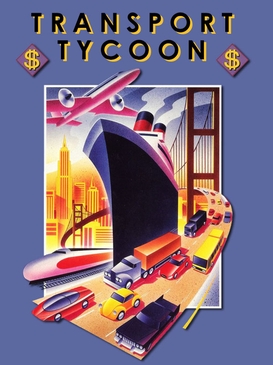
Transport Tycoon is a city-based video game designed and programmed by Chris Sawyer, and published by MicroProse on 15 November 1994 for DOS. It is a business simulation game, presented in an isometric view in 2D with graphics by Simon Foster, in which the player acts as an entrepreneur in control of a transport company, and can compete against rival companies to make as much profit as possible by transporting passengers and various goods by road, rail, sea and air.

The Incredible Machine (TIM) is a series of video games in which players create a series of Rube Goldberg devices. They were originally designed and coded by Kevin Ryan and produced by Jeff Tunnell, the now-defunct Jeff Tunnell Productions, and published by Dynamix; the 1993 through 1995 versions had the same development team, but the later 2000–2001 games have different designers. All versions were published by Sierra Entertainment. The entire series and intellectual property were acquired by Jeff Tunnell-founded PushButton Labs in October 2009. PushButton Labs was later acquired by Playdom, itself a division of Disney Interactive, so as of now the rights are held by The Walt Disney Company.

Jeffry Wayne is an American composer, musician and lyricist. In 1978, he released Jeff Wayne's Musical Version of The War of the Worlds, his musical adaptation of H. G. Wells' science-fiction novel The War of the Worlds. Wayne wrote approximately 3,000 advertising jingles in the 1970s which appeared on television in the United Kingdom, including a Gordon's Gin commercial which was covered by the Human League. Wayne also composed numerous television themes, including Good Morning Britain (TV-am), ITV's The Big Match and World of Sport, and the BBC's Sixty Minutes.
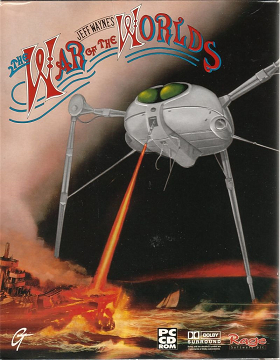
Jeff Wayne's The War of the Worlds is a real-time strategy video game developed by Rage Software Limited and released for Windows-based PCs in 1998. It is based on Jeff Wayne's Musical Version of The War of the Worlds — which is itself based on H. G. Wells' 1898 novel The War of the Worlds.
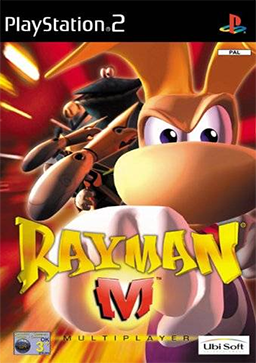
Rayman M, known in North America as Rayman Arena, is a party video game developed and published by Ubi Soft. A spin-off of the Rayman series, it features two modes in which players control one of the nine characters.

Twisted Metal 2 is a vehicular combat video game developed by SingleTrac and published by Sony Computer Entertainment. The second game in the Twisted Metal series, it was originally released in 1996 for PlayStation and Windows.

Lego Star Wars: The Video Game is a 2005 Lego-themed action-adventure video game based on the Lego Star Wars line of construction toys, and the first installment in the Lego video game franchise developed by Traveller's Tales, which would develop many future Lego titles from that point on. It was first released on 29 March 2005, and is a video game adaptation of the Star Wars prequel trilogy: The Phantom Menace, Attack of the Clones and Revenge of the Sith, with a bonus level from A New Hope.

Unreal Tournament 3 (UT3) is a first-person arena shooter video game developed by Epic Games and published by Midway Games. Part of the Unreal franchise, it is the fourth game in the Unreal Tournament series, and the eighth and final game overall; its name is in reflection of the game being the first in the franchise to use Unreal Engine 3. It was released on November 19, 2007, for Microsoft Windows, December 10 for the PlayStation 3, and on July 3, 2008, for the Xbox 360. OS X and Linux ports were planned, but they were eventually cancelled. A free-to-play version, entitled Unreal Tournament 3 X, was leaked in late 2022 and cancelled in 2023.
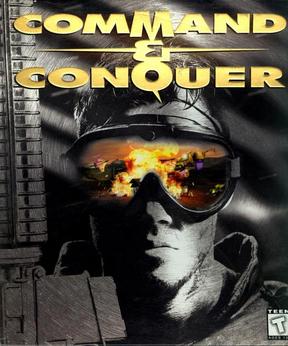
Command & Conquer is a real-time strategy video game developed and published by Westwood Studios in 1995. Set in an alternate history, the game tells the story of a world war between two globalized factions: the Global Defense Initiative of the United Nations and a revolutionary militant organization called the Brotherhood of Nod, led by the mysterious Kane.

Terminator 3: War of the Machines is a 2003 first-person shooter video game based on the film Terminator 3: Rise of the Machines. It was developed by Hungarian developer Clever's Games and published by Atari for Microsoft Windows. The game is set in a post-apocalyptic future when human and machine forces are battling for the world, and the player chooses which side to join. The game was negatively received, particularly for its character animations and artificial intelligence. Critics also viewed the game as a poor imitation of Battlefield 1942.
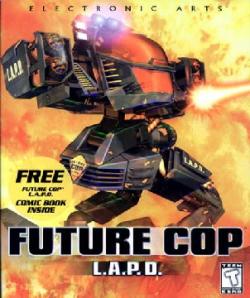
Future Cop: LAPD is a third-person shooter developed by EA Redwood Shores and published by Electronic Arts and released first for the PlayStation, then Mac OS and Windows. Future Cop was originally developed as an installment of the Strike series.

Last Armageddon is a 1988 post-apocalyptic role-playing video game for the NEC PC-8801, MSX, Sharp X68000, MS-DOS, PC Engine CD-ROM², and Nintendo Family Computer. The game was exclusively in the Japanese language until an English translation patch was created for the Nintendo Famicom.
Nicklas Nygren, better known as Nifflas, is an independent Swedish video game developer. He is known for his freeware Knytt series along with another freeware game, Within a Deep Forest. He has lived in Umeå, Sweden, and Copenhagen, Denmark.

Hercules is a 1997 platform video game developed by Eurocom Entertainment Software. It is based on the 1997 film of the same name. It released on the PlayStation and Microsoft Windows along with an abridged version developed by Tiertex Design Studios for the Game Boy released by THQ the same year.

WarGames: Defcon 1 is a video game for the PlayStation and Microsoft Windows developed by Interactive Studios and co-published by MGM Interactive and Electronic Arts. Although both versions possess the same missions and content, the PlayStation version is a tactical vehicle-shooting game while the PC version is a real-time strategy game. The game is loosely based on the movie WarGames; the story was scripted by John Badham, director of the original film.

A first-person shooter (FPS) is a video game centered on gun fighting and other weapon-based combat seen from a first-person perspective, with the player experiencing the action directly through the eyes of the main character. This genre shares multiple common traits with other shooter games, and in turn falls under the action games category. Since the genre's inception, advanced 3D and pseudo-3D graphics have proven fundamental to allow a reasonable level of immersion in the game world, and this type of game helped pushing technology progressively further, challenging hardware developers worldwide to introduce numerous innovations in the field of graphics processing units. Multiplayer gaming has been an integral part of the experience, and became even more prominent with the diffusion of internet connectivity in recent years.

Vessel is a physics-based, steampunk, puzzle-platform game developed by Strange Loop Games and published by indiePub. It was released March 1, 2012 for Microsoft Windows, for Linux on December 11, 2012 and for PlayStation 3's PlayStation Network in March 2014. An OS X version was released on January 7, 2013.
Jeff Wayne's The War of the Worlds may refer to:

The Cat in the Hat is a 2003 2.5D platform game for PlayStation 2, Xbox, Microsoft Windows and Game Boy Advance. The PlayStation 2 and Xbox versions were developed by Magenta Software. The Windows and Game Boy Advance versions were developed by Digital Eclipse. All versions of the game were published by Vivendi Universal Games. It is based on the 2003 film of the same name, which was released shortly after the game. A version for the GameCube was planned, but was never released. The Windows version is compatible with Windows 98, Windows ME, Windows 2000, Windows XP, Windows Vista, and Windows 7. It is not compatible with Windows 95 or earlier versions of Windows or Windows 8 and later versions of Windows.



















